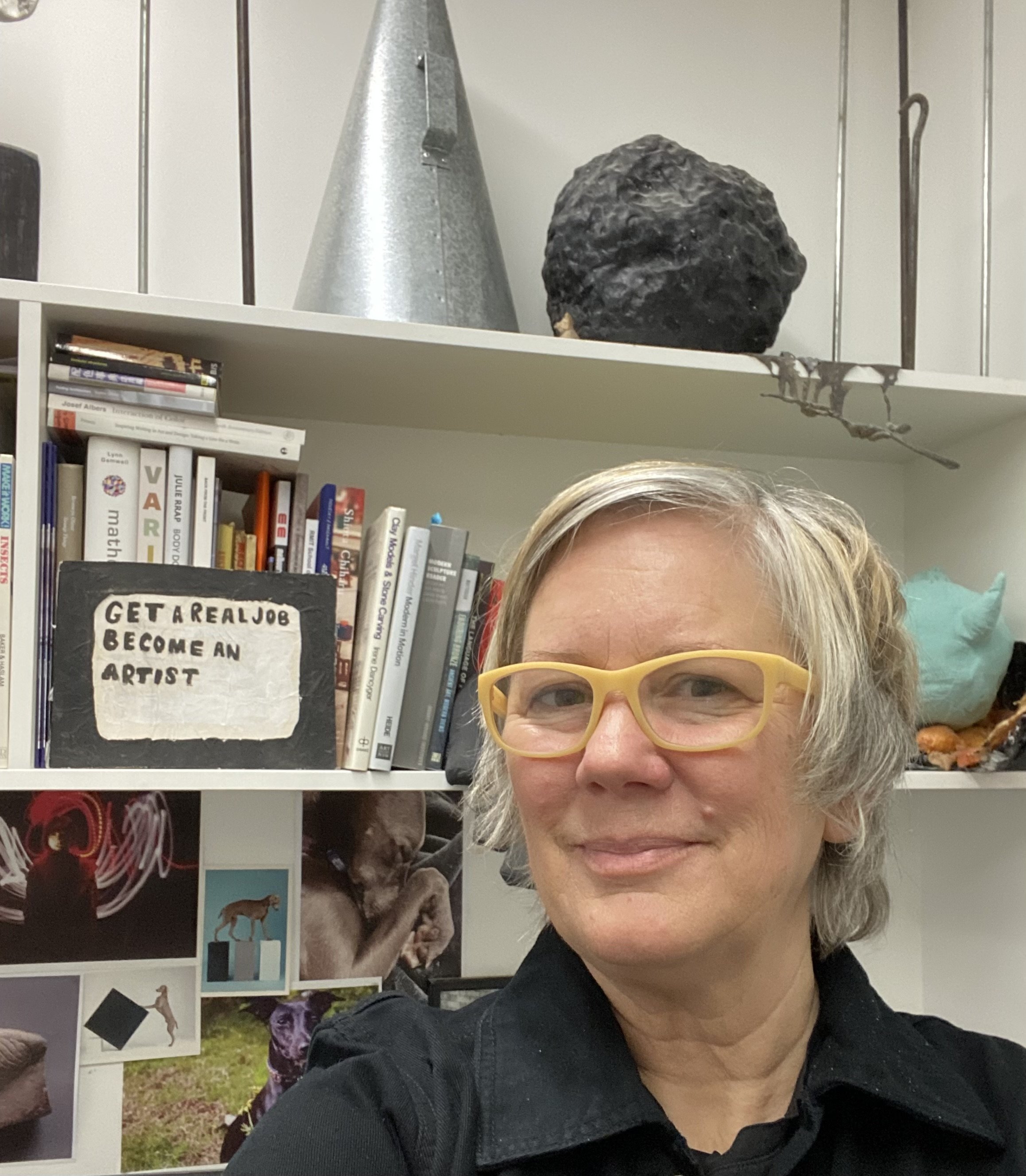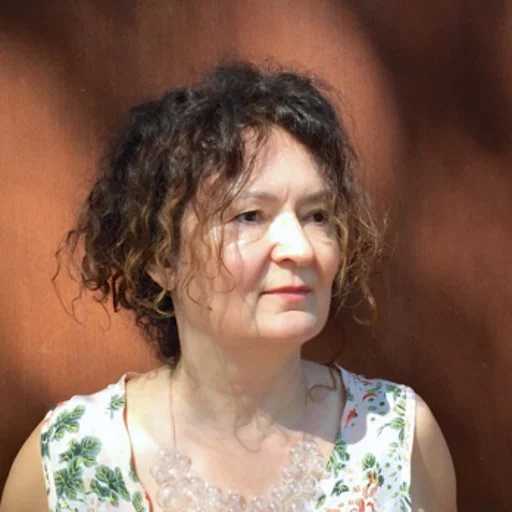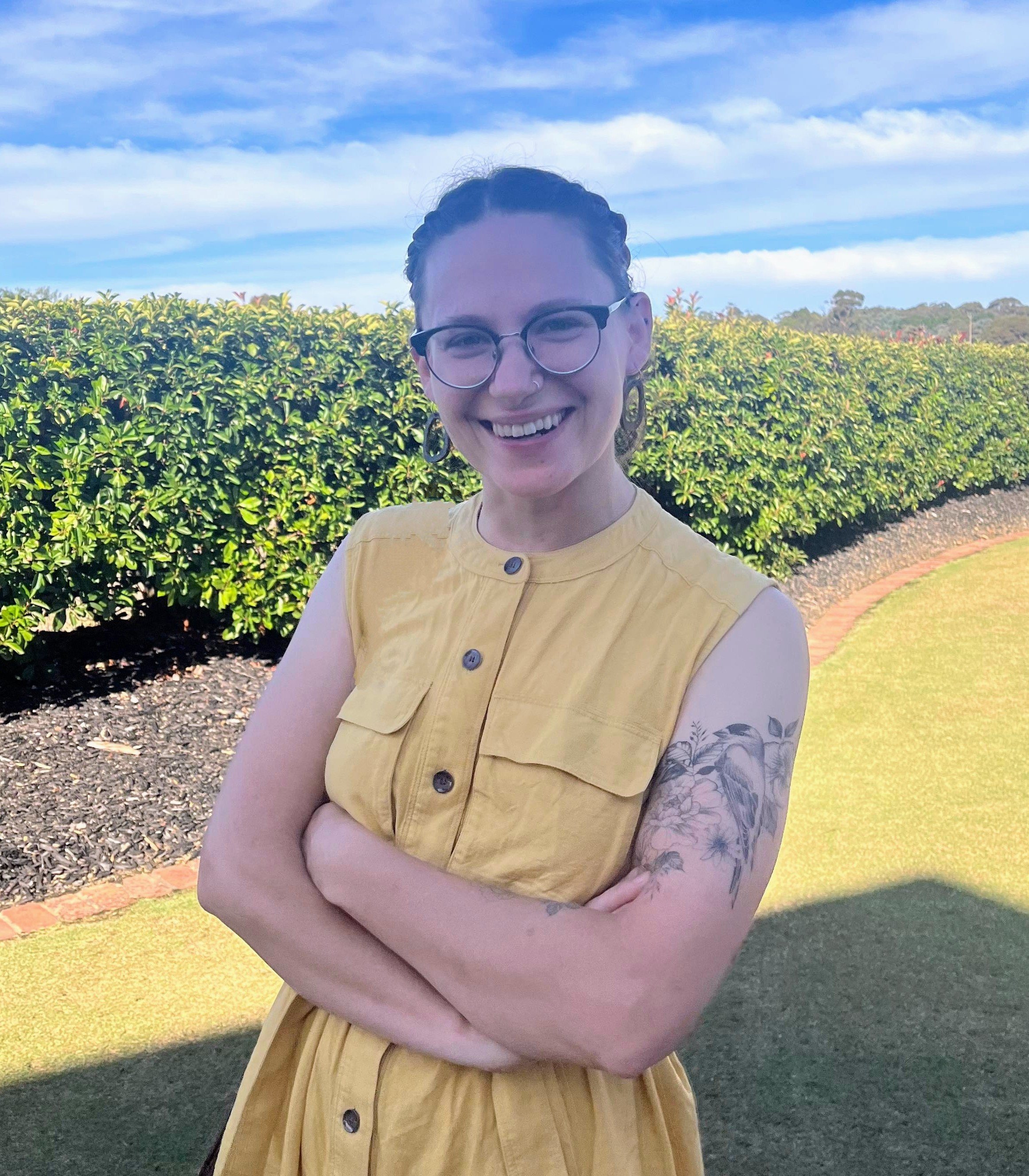
WHO

The Children’s Sensorium projects, exhibitions and research is led by curator Grace McQuilten with artistic direction from Boonwurrung elder N’Arwee’t Carolyn Briggs. It has been developed with leading contemporary artists including Larissa Hjorth (play and games), Hiromi Tango (colour and textile installation), Fiona Hillary (light), Philip Samartzis (sound), Heather Hesterman (planting and cultivation of plants), Anna Schwann (scent installation) with designer Anthony Clarke (Bloxas) and embodiment specialists Tamara Borovica, Angela Clarke and Camilla Maling (Live Particle). Strategies for emotional resilience and wellbeing have been developed with the guidance of critical mental health researchers Renata Kokanović and Tamara Borovica and industry collaborator, Live Particle.
Curatorial
N'arwee't Carolyn Briggs AM is a Professor in the Wominjeka Djeembana Indigenous research lab at Monash University’s Faculty of Art, Design and Architecture. She is a Boon Wurrung senior elder and a descendant of the First People of Melbourne, the Yaluk-ut Weelam Clan of the Boon Wurrung. She is also the Founder and Chair of the Boon Wurrung Foundation, established to conduct cultural research, including for the restoration of the Boon Wurrung language. She has been significantly involved in developing and supporting opportunities for Indigenous youth and Boon Wurrung culture for over 40 years. In 2019, she was awarded a Member of the Order of Australia for her significant service to the Aboriginal community. She holds a PhD from RMIT University.
Grace McQuilten is Associate Dean of Research and Innovation in the School of Art at RMIT University.
Grace's research champions inclusive models of curatorship and art history. Her work explores new approaches to the visual arts economy, including arts-based social enterprise, and explores questions of social justice, equity, diversity and inclusion in contemporary art, craft and design.
Artists
Anthony Clarke is a practicing architect and educator. Anthony established BLOXAS – A Practice for Empathic and Experimental Architecture in 2010. BLOXAS’ approach is led by research, experimentation, curiosity and care. These elements are inherent in their philosophy and drive their interrogative and empathetic response. Specialists from a variety of disciplines contribute to their curative understanding of individual and collective behaviour, sensory perception, physiology and phenomenology. BLOXAS investigates how people affect – and are at the effect of – their designs. Anthony completed his PhD in 2023 at Monash University titled: Architecture of Care; Using an Auto-Ethnographic Design Approach to Rearticulate Practice.
Hiromi Tango is a Japanese-Australian artist who lives and works in Bundjalung Country, Northern New South Wales.
Her practice intersects with art, health, and neuroscience, exploring universal themes of humanity, sustainability, and nature.
She has created many works specifically designed for children, including Dance for the Jackson Bella Room at the National Centre for Creative Learning (MCA), Monster Hotel as part of Out of the Box Festival 2014, Lizard Tail as part of Imaginarium 2017 at Singapore Art Museum, and Healing Garden as part of the Sheikha Manal Little Artists Programme, 2018. These works were developed in collaboration with numerous scientists, health professionals and research institutions,exploring how various aspects of the art-making process can contribute to positive mental wellbeing.
Currently, Hiromi is developing a new work for a major children’s program at the National Gallery of Singapore, launching in 2025.
Photo: Karina Pires
ALEX is a Filipino - Australian artist based in Naarm, exploring themes of self - identity through the interplay of material and symbolism. Their work navigates the intricate landscape of mental health and trauma, with a focus on PTSD and CPTSD.
They also delve into the decolonisation of self-identity and seek to heal inherited internalised racism through research and implementation of pre-colonial Filipino tattoo ink making techniques and imagery.
Through the usage of primarily recycled materials, their artistic approach is deeply rooted in materiality, each piece telling a story and evoking the history, meaning, and emotion of the materials used to create it.
Moon Girle is a neurodiverse artist that is part of the LGBTIQ community, residing in Naarm, Melbourne. Her artistic narratives playfully transcend individual experiences, engaging with the pulsating heart of globalisation and community.
Discarded objects are foraged and crafted into whimsical interactive installations, sculptures, paintings and engagingly playful workshops. Pulled between physical reality and her imagination, she crafts textural, eclectic and vivid symphonies of colour which evolve as she makes them. Facilitating a bridge between the observer’s inner child to be explored and nourished. Moon Girle’s work illuminates the majesty of circular economies using kitschy aesthetics.
Heather Hesterman is an artist/educator/researcher based in Naarm/Melbourne who investigates intersections of place, people, and plants.
She explores a site's spatial, political, and historical perspectives, incorporating installation, walking, and public art practices.
Combined expertise in Fine Art and Landscape Design provides complementary perspectives from which she investigates the tacit and explicit effects of human interactions in the environment. Heather is a current PhD candidate at the University of Tasmania, addressing human-plant relations by cultivating chlorophilia- a love for plants and investigating how plants might inform creative practice.
https://heatherhesterman.com/
Fiona Hillary is an artist and academic based in Naarm/Melbourne. She works in the public realm and is passionate about site-specific fieldwork practices and the human/non-human relationships that reveal themselves across time.
Photograph: Jody Haines.
Distinguished Professor Larissa Hjorth is a socially-engaged artist and digital ethnographer. Hjorth has two decades experience working in interdisciplinary, collaborative, playful and socially innovative digital media methods to explore intergenerational relationships in cross-cultural contexts.
Dr Innocent connects people and place through urban play. Working with the city as a material, his work traverses the analog and digital spaces we live in. His approach to 'reworlding' is speculative design in action as it reconnects, reimagines and regenerates the creative, cultural and social diversity of our world. Innocent is creator of 64 Ways of Being, an innovative augmented reality platform for listening, playing and exploring cities through new eyes, and leads a three-year study on post-pandemic impacts of creative placemaking. Innocent is currently based at RMIT University where he is Director of the future play lab in the School of Design.
Live Particle is the combined forces of Angela Clarke and Camilla Maling. As artist/educators their moving, sonic and tactile work emerges in the playful spaces in between people, things and environments. Their multi-sensory tools and games, soma scores, soma kits and supersized soma scroll encourage curious investigation and physical improvisation to explore sensory intelligence and grow embodied awareness. The imaginative and relational strategies they use in live workshops help reduce stress and anxiety, aid in processing trauma and inspire creativity. Live Particle are passionate about sharing embodied practice and somatics to support mental, physical and creative health.
Vivian Qiu is a jewellery artist whose practice focuses on reflective design based on cultural identity, healing and symbolism. With her living experience in different countries, she explores her roots and identity through her material research. She makes culturally significant materials for her jewellery and artwork, such as rice fabric, rice clay and soil clay.
Professor Philip Samartzis is a sound artist, researcher, and curator with an interest in the social and environmental conditions of remote regions. His work encompasses the Australian Antarctic Territory, the Swiss and Australian Alps, and the Kimberley and Pilbara regions of Western Australia. Philip is currently a chief investigator on an Australia Research Council Discovery Project titled Creative Antarctica, Artists and Writers in the Far South, and leader of the Sound Art and Auditory Culture Lab in the School of Art at RMIT.
Anna Schwann works in an expanded sculptural practice that investigates the encounter between art and audience.
Through playful resistance and embracing failure she facilitates a conversation using sensory engaging tactics as means of connection.
Taking a D.I.Y approach to technique, Schwann utilises provisional, accessible materials for making and uses everyday objects in their narrative.
Living on unceded DjaDja Wurrung land of the Djaara people.
Dr Fleur Summers is a researcher, academic and artist in the School of Art at RMIT University. She is interested in socially engaged works and how humans can connect and communicate through sculptural objects. Working at a range of scales, she is concerned with how touch has the potential to break down boundaries and create extended fields of interactions through material engagement between bodies. She explores the act of cognitively and haptically projecting oneself into another body or environment through a range of materials from soft sculpture to metal casting. She is particularly interested in the bronze casting process which is both sensitive enough to record touch but durable enough to allow extended material engagement.
Recent works include My Hand in Yours (Radiant Pavilion 2024), Getting in Touch (Big Anxiety Festival, Design Hub, 2022) and Making Sense (public sculpture commissioned by VicTrack for Jewell Station 2019).
Researchers
Dr. Tamara Borovica (she/her) is a Vice-Chancellor's Postdoctoral Research Fellow and creative artist at the Social Equity Research Centre, the School of Global, Urban and Social Studies at RMIT University. Tamara's research focuses on innovative psycho-social approaches to emotionality, mental health, and resilience, with particular expertise in participatory and arts-based methods and interventions. Her work is grounded in using creative, embodied methods to make research more inclusive and transformative for diverse communities. Committed to applied, lived experience and participatory research, Tamara collaborates with groups and communities to improve mental health and wellbeing, ensuring that those directly impacted by trauma, inequality and loss have a voice in shaping the research that affects their lives. Tamara's role in The Children's Sensorium project is evaluation and contributing with mental health advice.
Renata Kokanović is a Professor of Sociology (Mental Health) and an RMIT University Vice Chancellor's Senior Research Fellow. She is the Lead Investigator of the Borderline Personality as Social Phenomena project.
Rebecca Weiner is a PhD student at the Social Equity Research Centre and the Centre for Urban Research at RMIT University. Her research focuses on built and travel environments and how they relate to health, wellbeing and social connection.


















